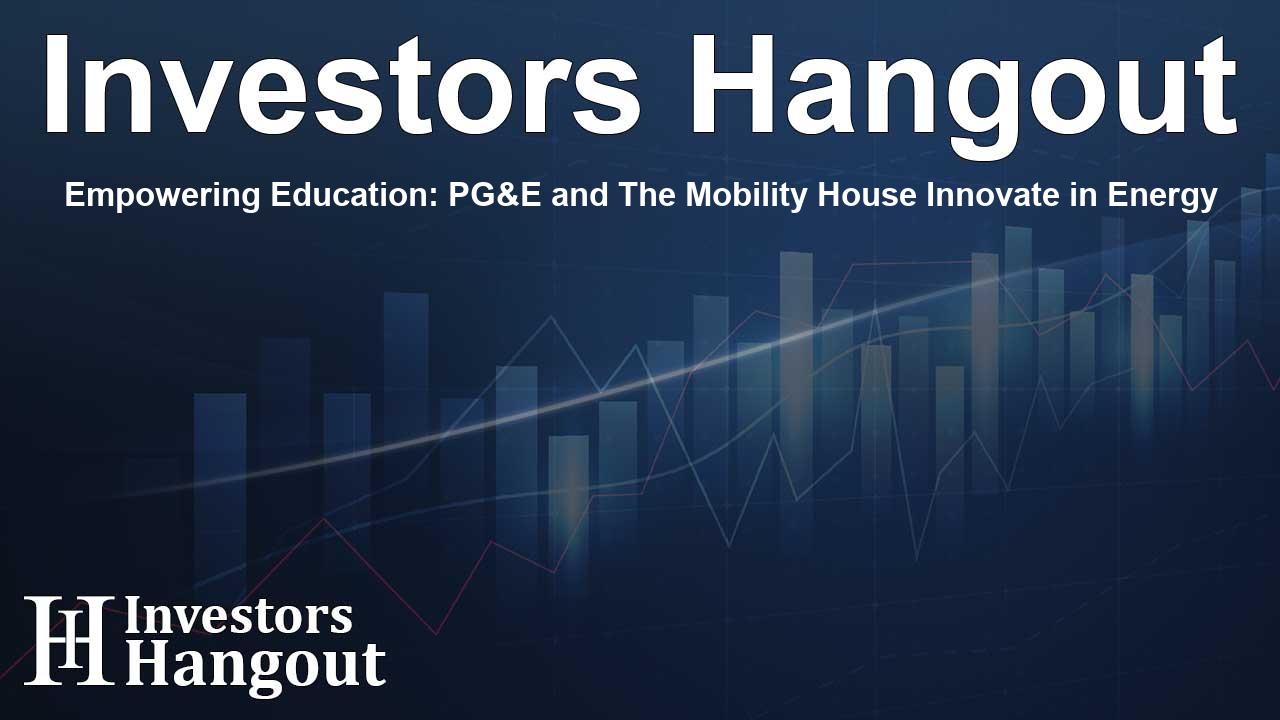Empowering Education: PG&E and The Mobility House Innovate in Energy

Transforming Student Transportation with V2G Technology
In a significant development for clean energy and student transportation, Pacific Gas and Electric Company (PG&E) announced a groundbreaking initiative in collaboration with Fremont Unified School District (FUSD) and The Mobility House. This innovative project expands the electric bus fleet to include advanced vehicle-to-grid (V2G) technology, providing both clean transportation options for students and sustainable energy solutions.
The Launch of an Innovative Fleet
The newly commissioned fleet features 22 electric vehicle chargers, strategically designed to manage and power FUSD’s growing fleet of 14 electric school buses. This includes four units from Thomas Built and 10 from Blue Bird, efficiently replacing six internal combustion engine buses. The investment will ensure that these electric buses can not only provide service to students but also return energy to the grid, enhancing overall grid resilience.
Investment in Infrastructure and Community Resources
This advanced infrastructure signifies a commitment to a cleaner, smarter future of energy. As noted by Mike Delaney, Vice President of Utility Partnership and Innovation at PG&E, this project presents a remarkable example of how technological innovation shapes a brighter future not just for the environment, but for the community. Furthermore, it will support Fremont USD’s ongoing transition to electrified student transportation.
The installation includes critical upgrades to the electrical infrastructure, such as a new 480-volt three-phase service entrance and a 750 kVA transformer, ensuring the site can meet both current and future charging necessities.
Smart Charging for a Reliable Grid
The project’s backbone is The Mobility House’s smart charge management platform, ChargePilot. This system optimizes the charging and discharging of electric buses, allowing the district to participate in PG&E's Emergency Load Reduction Program. This modern response capability helps address peak demand and keeps the community's energy supply stable.
Gregor Hintler, CEO North America of The Mobility House, stated that electric school buses hold immense potential for grid support due to their predictable schedules and sizable batteries. This collaboration facilitates a dual purpose: providing safe transportation for students while contributing positively to energy resilience in the community.
A Scalable Model for Other Districts
This initiative not only emphasizes innovation but also highlights the potential for replication in other districts. Leveraging insights gained from this venture, other regions can also transform their transportation fleets, adhering to similar sustainability goals. Fremont USD’s involvement in PG&E's EV Fleet program, initiated in 2019, further supports this vision, successfully deploying 17 electric school buses and thirteen electric medium-duty vehicles.
Collaborative Efforts Leading to Change
The success of this pioneering project is made possible through collaboration with several key partners, including The Mobility House, Polara, the World Resources Institute, and the Center for Transportation and the Environment. Their collective efforts are transforming the future of school transportation.
As Ernest Epley, Director of Transportation at Fremont USD, mentioned, the introduction of electric buses has already shown benefits for air quality. There is now an exciting opportunity to extend these benefits further into the community by utilizing these vehicles for energy distribution.
About PG&E
Pacific Gas and Electric Company is a subsidiary of PG&E Corporation (NYSE: PCG), operating as a combined natural gas and electric utility. Serving over sixteen million people across a vast geographic area, PG&E remains committed to delivering safe, reliable, and clean energy. To explore more about their initiatives, visit pge.com, pge.com/news, or pge.com/innovation.
Frequently Asked Questions
What is the significance of the V2G technology in the project?
The V2G technology allows electric school buses to not only transport students but also send energy back to the electrical grid, enhancing grid reliability.
How many electric buses are included in the Fremont USD fleet?
The fleet consists of 14 electric school buses, including four Thomas Built and 10 Blue Bird busses.
What upgrades were made to the electrical infrastructure?
Key upgrades included a new 480-volt three-phase service entrance, a 750 kVA transformer, and a 2,500 Amp switchgear to manage current and future charging needs.
What are the main goals of this partnership?
The partnership aims to create cleaner student transportation options while supporting energy resilience in the community through innovative technology.
Who are the main partners involved in this project?
The main partners include PG&E, The Mobility House, Polara, World Resources Institute, and Center for Transportation and the Environment.
About The Author
Contact Caleb Price privately here. Or send an email with ATTN: Caleb Price as the subject to contact@investorshangout.com.
About Investors Hangout
Investors Hangout is a leading online stock forum for financial discussion and learning, offering a wide range of free tools and resources. It draws in traders of all levels, who exchange market knowledge, investigate trading tactics, and keep an eye on industry developments in real time. Featuring financial articles, stock message boards, quotes, charts, company profiles, and live news updates. Through cooperative learning and a wealth of informational resources, it helps users from novices creating their first portfolios to experts honing their techniques. Join Investors Hangout today: https://investorshangout.com/
The content of this article is based on factual, publicly available information and does not represent legal, financial, or investment advice. Investors Hangout does not offer financial advice, and the author is not a licensed financial advisor. Consult a qualified advisor before making any financial or investment decisions based on this article. This article should not be considered advice to purchase, sell, or hold any securities or other investments. If any of the material provided here is inaccurate, please contact us for corrections.
